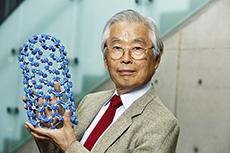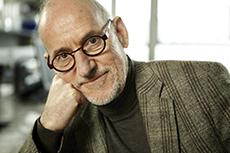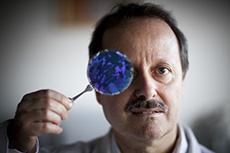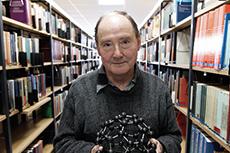Materials science: Nanotechnology in the spotlight
Last updated: 11.12.2019

Nanotechnology (from the Greek “νᾶνος nános” = dwarf) has captured the imaginations of artists and scientists for decades. In the 1966 science fiction film “Fantastic Voyage”, a team of researchers is shrunk to nano-size in order to travel through the human bloodstream. In 2015 movie-goers were treated to “Ant Man”, a comic book movie about a miniscule superhero who wears a nano-suit.
In the decades between these two fictional adventures, researchers made great strides toward transforming bold visions into scientific practice.
Today, many innovations already rely on patented nanotechnology, from intelligent building materials and miscroscopically small drug capsules all the way to the nano-scale microchips used in the IT industry.
Multiple winners and finalists of the European Inventor Award are among the key patented innovations in the nanotechnology sector.

Sumio Iijima: Revolutionising materials science with carbon nanotubes
Winner, European Inventor Award 2015 (Non-European countries)
Nanotechnology delivers the building blocks of the future. Carbon nanotubes (CNT), discovered by Japanese researcher Sumio Iijima, are tiny tube-shaped molecular structures that are only visible under a strong microscope. Although they’re extremely small, their potential is gigantic: The hardest substance known to humankind, they’re 1000 times more conductive than copper and are considered the greatest materials science discovery in decades.
Iijima’s patented invention is revolutionising the foundation of materials science, which previously knew only three different forms of pure carbon: diamonds, graphite, and hollow, spherical fullerenes.
As the “fourth element”, carbon nanotubes open the way for super-fast computers, more efficient solar cells, and nearly inconceivably robust materials. More than 100 companies worldwide are already manufacturing the tiny tubes, which were patented by technology company NEC. And the market is booming: By 2016, it is estimated to soar to 912.6 million euros (1.1 billion dollars).

Patrick Couvreur: Nano-capsules for anti-cancer drugs
Winner, European Inventor Award 2013 (Research)
In the area of oncology, nanotechnology presents a “gentle” alternative to aggressive chemotherapy. Instead of flooding the entire body with poisonous chemicals, the “nano-capsules” developed by French researcher Patrick Couvreur don’t release their drug load until they have made their way through the bloodstream to reach the tumour.
Couvreur’s nano-capsules only measure between 10 and 1000 nanometres – that’s more than 70 times smaller than red blood cells – and are coated with biodegradable polymers that slowly dissolve in the body. These unique characteristics allow nano-capsules to carry higher dosages, rendering them up to 10 times as effective as chemotherapy while sparing healthy body cells in the process.
The innovative nano-scale invention from the laboratories of the Centre National de la Recherche Scientifique received a 2013 European Inventor Award. It’s currently being prepared for market entry by BioAlliance Pharma, the company Couvreur founded in 1997.

Leigh Canham: Nanostructured silicon for the healthcare sector
Finalist, European Inventor Award 2011 (Small and medium enterprises)
Even well-known materials can exhibit surprising characteristics on a nano-scale. In 1995, British scientist Leigh Canham discovered the luminescence and biodegradability of nanostructured silicon. His groundbreaking insight: The human body can safely absorb silicon that has previously been nano-engineered – only the harmless acid silica remains behind.
Canham’s new form of porous nano-silicon, dubbed BioSilicon, unlocked a range of innovative applications, including controlled drug administration, targeted cancer therapies, medical imaging, tissue engineering, and improved health and beauty products. The complex material’s honeycomb structure contains nano-sized pockets that can be filled with drugs, peptides, genes, proteins, radionuclides and other therapeutic agents or vaccines.
BioSilicon already has several concrete applications, including an eye implant for the treatment of AIDS-related cytomegalovirus retinitis, as well as a tiny injectable device used in diabetes therapy.

Wolfgang Krätschmer: Manufacturing process for fullerenes
Winner, European Inventor Award 2010 (Lifetime achievement)
In research laboratories, nanotechnology enables the large-scale manufacture of so-called “fullerenes”, a new form of pure carbon. This type of nanoparticle – known as “C60” because it is made up of 60 carbon atoms – was discovered in 1985, but scientists still lacked a suitable manufacturing process that would allow them to study C60 in depth. Enter German nuclear physicist Wolfgang Krätschmer and his US colleague Donald Huffman at the University of Arizona, who paved the way with their patented method.
The “Krätschmer Huffman Method”, introduced in 1993, represented a quantum leap for fullerene research in labs around the world: Within only three years, scientists submitted nearly 300 applications for new patent families relating to C60, and thousands more have followed since. In the short time between 2008 and 2015, the world market for fullerenes has grown from 265 million to 4.1 billion euros.
Today, the nanoparticles – which look like miniscule footballs when observed under a microscope – are used in innovative fuels, superconductors, high-performance lubricants, and in the pharmaceuticals industry. Krätschmer, who received a 2010 European Inventor Award for his lifetime achievement, supports fullerene research via the Krätschmer Group, an organisation devoted to studying the enormous potential of the tiny carbon spheres.